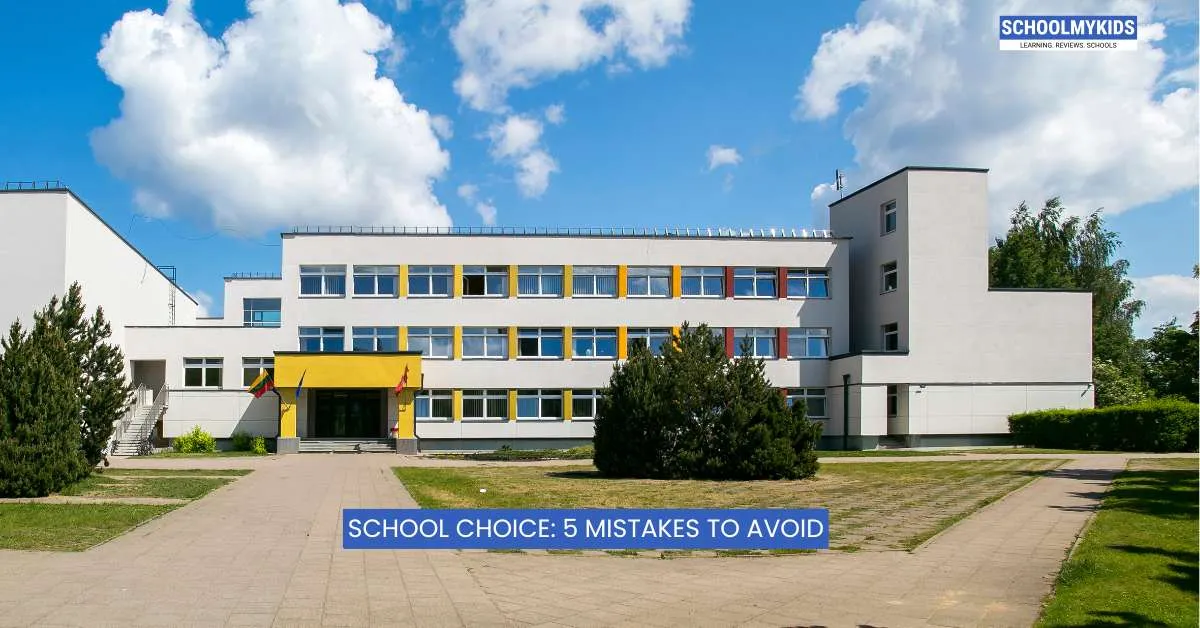Choosing a school for your child is one of the most significant and emotionally charged decisions a parent will make. The right environment can foster a love of learning, build confidence, and set a child on a path to success and happiness. The pressure to "get it right" is immense, and in this high-stakes process, it's easy to fall into common traps. By understanding these pitfalls, you can navigate the selection maze with more clarity and confidence, ensuring your choice is based on what truly matters for your child.
Mistake 1: The Lure of Rankings and Test Scores
In an attempt to simplify a complex decision, many parents lean heavily on school rankings and average standardized test scores. These metrics offer the illusion of an objective, data-driven choice. The problem is that they paint an incomplete and often misleading picture. A school at the top of the league tables might achieve its results through a high-pressure, "teach-to-the-test" culture that burns out students and stifles creativity. High scores tell you nothing about the quality of the arts program, the school's approach to social-emotional learning, or whether the teachers are inspiring and supportive.
What to Do Instead: Use rankings and test scores as just one data point among many. Dig deeper. Read the school's mission statement and educational philosophy. Does it resonate with your family's values? Look at the curriculum beyond the core subjects. Seek out measures of student engagement and well-being, which are far better indicators of a healthy learning environment.
Mistake 2: Overlooking the School's True Culture
Every school has a unique personality—its culture. Some are intensely competitive, while others are collaborative and nurturing. Some are formal and traditional, while others are progressive and flexible. Choosing a school where the culture is a mismatch for your child's temperament is a recipe for disaster. A quiet, artistic child may feel lost and overwhelmed in a large, sports-focused school. A hands-on, active learner may become disengaged in a highly structured, lecture-based environment.
What to Do Instead: Become a school anthropologist. Attend an open house, and if possible, tour the school on a normal day. Observe the interactions in the hallways and classrooms. Do the students seem happy and engaged? How do teachers speak to them? Talk to current parents to get an unfiltered perspective. Trust your intuition—does the atmosphere feel right for your child?
Mistake 3: Forgetting the Most Important Stakeholder: Your Child
Parents rightfully feel that they know best, and they typically have the final say. However, excluding the child (especially an older child or teenager) from the decision-making process can be a significant mistake. A child who feels the decision was forced upon them is more likely to be resentful and disengaged from their new school. Their insights are also valuable; they may notice social dynamics or aspects of the school environment that adults miss.
What to Do Instead: Frame the process as a team effort. Discuss with your child what they think is important in a school. What are they excited about? What are they worried about? Take them on tours and genuinely ask for their opinions. Giving them a voice doesn't mean giving them the final vote, but it does foster a sense of ownership and makes them a partner in the transition.
Mistake 4: Ignoring the Daily Realities of Logistics and Cost
It is easy to become enamored with a "dream school," even if it’s an hour's drive away or its tuition will stretch the family budget to its breaking point. Downplaying these practical factors is a common and serious error. A long daily commute can lead to exhaustion for both child and parent, cutting into precious time for homework, extracurriculars, family dinners, and sleep. The chronic stress of a precarious financial situation can negatively impact the entire family's well-being.
What to Do Instead: Be brutally realistic. Create a detailed budget that includes not just tuition but all the hidden costs: uniforms, books, transport, mandatory trips, and fundraising expectations. Map the commute and do a few trial runs during peak traffic. Have an honest family discussion about whether the perceived benefits of the school truly outweigh these daily logistical and financial burdens.
Mistake 5: Following the Crowd, Not the Child
When all your friends, neighbors, or colleagues are sending their children to a particular "it" school, the pressure to do the same can be overwhelming. It's easy to assume that the popular choice is the best choice. But what works wonderfully for your neighbor’s child might be a terrible fit for yours. Every child has a unique combination of strengths, weaknesses, challenges, and learning styles.
What to Do Instead: Tune out the noise and focus on your child. Before you even start looking at schools, sit down and write a profile of your child as a learner and as a person. What environment would make them light up? Do they need more structure or more freedom? Do they thrive in large groups or smaller settings? Use this personalized profile as your compass. The goal is not to find the "best" school, but the best school for your child.








Be the first one to comment on this story.